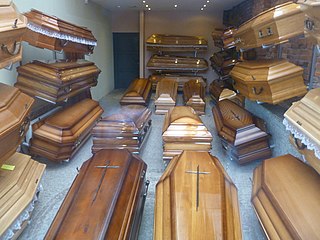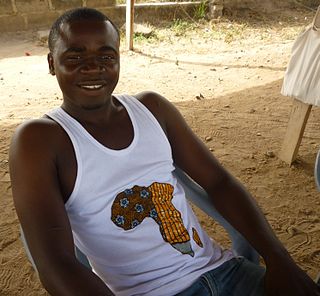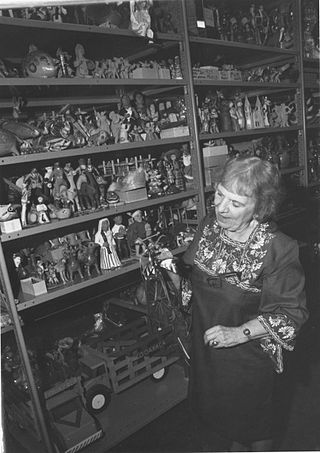
Accra is the capital and largest city of Ghana, located on the southern coast at the Gulf of Guinea, which is part of the Atlantic Ocean. As of 2021 census, the Accra Metropolitan District, 20.4 km2 (7.9 sq mi), had a population of 284,124 inhabitants, and the larger Greater Accra Region, 3,245 km2 (1,253 sq mi), had a population of 5,455,692 inhabitants. In common usage, the name "Accra" often refers to the territory of the Accra Metropolitan District as it existed before 2008, when it covered 199.4 km2 (77.0 sq mi). This territory has since been split into 13 local government districts: 12 independent municipal districts and the reduced Accra Metropolitan District (20.4 km2), which is the only district within the capital to be granted city status. This territory of 199.4 km2 contained 1,782,150 inhabitants at the 2021 census, and serves as the capital of Ghana, while the district under the jurisdiction of the Accra Metropolitan Assembly proper (20.4 km2) is distinguished from the rest of the capital as the "City of Accra".

A coffin is a funerary box used for viewing or keeping a corpse, for either burial or cremation.

The Greater Accra Region has the smallest area of Ghana's 16 administrative regions, occupying a total land surface of 3,245 square kilometres. This is 1.4 per cent of the total land area of Ghana. It is the most populated region, with a population of 5,455,692 in 2021, accounting for 17.7 per cent of Ghana's total population.
The Ga-Dangbe, Ga-Dangme, Ga-Adangme or Ga-Adangbe are an ethnic group in Ghana, Togo and Benin. The Ga or Gan and Dangbe or Dangme people are grouped as part of the Ga–Dangme ethnolinguistic group. The Ga-Dangmes are one ethnic group that lives primarily in the Greater Accra region of Ghana.

The litter is a class of wheelless vehicles, a type of human-powered transport, for the transport of people. Smaller litters may take the form of open chairs or beds carried by two or more carriers, some being enclosed for protection from the elements. Larger litters, for example those of the Chinese emperors, may resemble small rooms upon a platform borne upon the shoulders of a dozen or more people. To most efficiently carry a litter, porters either place the carrying poles directly upon their shoulders or use a yoke to transfer the load from the carrying poles to the shoulders.

Teshie is a coastal town in the Ledzokuku Municipal District, a district in the Greater Accra Region of southeastern Ghana. Teshie is the ninth most populous settlement in Ghana, with a population of 171,875 people.
Articles related to Ghana include:
Owusu-Ankomah is a leading contemporary African artist with origins in Ghana. His work addresses themes of identity and the body, using his trademark motif of Adinkra symbolism. His work is also "influenced by the art of the Renaissance, handwritten texts from ancient cultures such as the adinkra symbol system of the Akan people of Ghana, Chinese ideograms, and contemporary global cultures." Owusu-Ankomah is a trained artist from Achimota College, near Accra, "established in 1936 and in 1952 incorporated into the University of Science and Technology at Kumasi."

Eric Adjetey Anang is a Ghanaian sculptor and fantasy coffin carpenter. He was born in Teshie, Ghana and runs the Kane Kwei Carpentry Workshop. He currently maintains dual residency and splits his time between Ghana and Madison, Wisconsin, where he is pursuing unique projects.

Kudjoe Affutu is a Ghanaian artist and figurative coffin and palanquin builder. He was born and still lives in Awutu Bawyiase, Central Region, Ghana. Affutu has made a name for himself in Europe by participating in various art projects and exhibitions.
Regula Tschumi is a Swiss social anthropologist and art historian.

Ataa Oko Addo was a Ghanaian builder of figurative palanquins and figurative coffins, and at over 80 years of age he became a painter of Art Brut.

The Caplan Collection of folk art and childhood artifacts is held by The Children's Museum of Indianapolis; in 1984 it was donated by Frank and Theresa Caplan, owners of the Creative Playthings toy company. The museum began accessioning the collection in January 1985. The collection consists of nearly 32,000 objects, from toys to dolls to games to musical instruments to masks to clothing to folk art from over 120 countries. The museum created a specific exhibit for the collection, entitled "Passport to the World," which opened in 1986. Initially the Caplans had intended for the collection to be the basis of a new Museum of Fantasy and Play, but this never materialized and they donated their collection to the Children's Museum instead. The Caplans spent about US$1 million acquiring the objects from around 1965 to 1985; some of the countries strongly represented are Japan, Mexico, Russia, Germany, Indonesia, and India.

Fantasycoffins or figurative coffins, also called “FAVs” and custom, fantastic, or proverbial coffins, are functional coffins made by specialized carpenters in the Greater Accra Region of Ghana. These colorful objects, which developed out of figurative palanquins, are not only coffins but considered works of art. They were shown for the first time to a wider Western public in the exhibition Les Magiciens de la terre at the Musée National d'Art Moderne in Paris in 1989. The seven coffins shown in Paris were made by Kane Kwei (1922–1992) and his former assistant Paa Joe. Since then, coffins by Kane Kwei, his grandson Eric Adjetey Anang, Paa Joe, Daniel Mensah, Kudjoe Affutu, Theophilus Nii Anum Sowah, Benezate, and other artists have been displayed in international art museums and galleries around the world.
Paa Joe is a Ghanaian sculptor, and figurative palanquin and fantasy coffin carpenter. Joe is considered one of the most important Ghanaian coffin or abebuu adekai artists of his generation. He has been involved in the international art world since 1989, and has been included in major exhibitions in Europe, Japan, and the USA. His fantasy coffins are in the collections and on permanent display in many art museums worldwide, including the British Museum in London, the Brooklyn Museum in New York, the Royal Ontario Museum in Canada, the Museum of Fine Arts, Boston, the National Museum of Ethnology in Osaka and many others as well as the private collections of foreign dignitaries. Joe is building an art academy and gallery to support the community and art students across the globe.

Daniel Mensah, also known as Hello, is a Ga carpenter and fantasy coffin artist. He works as an independent artist and carpenter in Teshie, Greater Accra, Ghana.

A figurative palanquin connected with the totem of its owner is a special kind of litter used in the Greater Accra Region in Ghana. These palanquins called in the Ga language okadi akpakai belong to the royal insignias and are used only by the Ga kings or mantsemei and their sub-chiefs when they are carried in public at durbars and festivals like Homowo. With these figurative palanquins the Ga create ethnic differences between themselves and their Akan neighbours that only use simple boat- or chair-shaped litters.
A Ghanaian film poster is a film poster hand-painted in Ghana used to advertise films produced in Ghana as well as world cinema. Ghanaian film posters, particularly hand-painted posters from the 1980s and 1990s, have become noted for their imaginative and unique artistry. They have been exhibited around the world in galleries and museums in Los Angeles, New York, Hong Kong, San Francisco, Chicago, and across Europe.
Theophilus Nii Anum Sowah is a Ghanaian figurative palanquin and fantasy coffin artist. Nii Anum was the chief apprentice in the Kane Kwei Carpentry Workshop where he worked ahead of other artists like Paa Joe.














